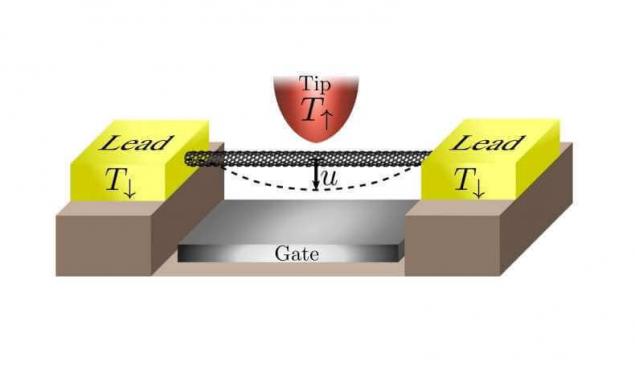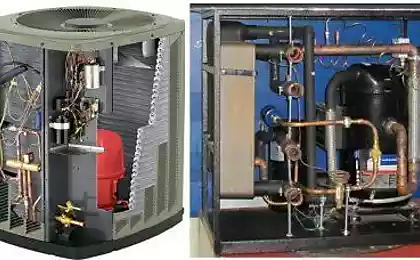392
Created heat nasodigital that does not require electricity
Swedish and Ukrainian scientists have developed a new nanoelectromechanical system, which uses heat to create mechanical motion as a result of the interactions that occur between the electrons, but, unlike analogue, does not require electric current."Microscopic devices that combine electronics with mechanics (MEMS) are widely distributed in the modern world, — said A. vikström from the Technological University of Chalmers in Gothenburg. Sensors inside smartphones, determining acceleration, position, etc ... are good examples. Reduction of electronic devices, there have been many attempts to replace these microscopic structures nanoscopic, NEMS. Heat engine names, which we offer, differs in that it converts heat flow into mechanical motion, without demanding or producing electric current".
Typically, such devices require the presence of current and work in his absence. The new mechanism consists of carbon nanotubes, suspended between the two terminals of the electrode where the pair of pins acts as a container for a single electron. Electrode over the nanotube has been acts as a second container containing an electron with opposite spin. The electrons are free to move between the containers to the nanotube and back. But since the electrons from the other containers have opposite spin, they can't go to the opposite container so that the charge transfer does not occur.

Everything becomes more interesting, when the temperature of the containers of the electrons begins to differ. When the cold electrons from one container and hot from the other moving to the nanotube, they interact, and heat is transferred from hot to cold electrons. When the cold electrons return to your cold container, they are additional energy, whereas hot electrons are returned with less energy.
If the top container is hot, then the heat flux shifts slightly nanotube to this container. This increases the tunneling time between them, which creates a feedback mechanism, but with a delayed response, which leads to vibration of the nanotube.

By controlling the temperature of containers, scientists have demonstrated the ability to control the direction and strength of the mechanism response and the increase or decrease in the level of vibration. And see for his invention several applications.
"Heat is always available in electrical circuits as a by-product, says vikström. Usually this energy is wasted, but if you find a use for, say, launch the integrated device names, the system will be more energy efficient".
In the summer of Singapore scientists first demonstrated the potential of walking nanomotor with the highest fuel efficiency among all types of such devices known to date. The speed of movement of the mechanism with a length of 20 nm is 3 nm per minute. published
Source: hightech.fm/2016/12/28/nems
Typically, such devices require the presence of current and work in his absence. The new mechanism consists of carbon nanotubes, suspended between the two terminals of the electrode where the pair of pins acts as a container for a single electron. Electrode over the nanotube has been acts as a second container containing an electron with opposite spin. The electrons are free to move between the containers to the nanotube and back. But since the electrons from the other containers have opposite spin, they can't go to the opposite container so that the charge transfer does not occur.

Everything becomes more interesting, when the temperature of the containers of the electrons begins to differ. When the cold electrons from one container and hot from the other moving to the nanotube, they interact, and heat is transferred from hot to cold electrons. When the cold electrons return to your cold container, they are additional energy, whereas hot electrons are returned with less energy.
If the top container is hot, then the heat flux shifts slightly nanotube to this container. This increases the tunneling time between them, which creates a feedback mechanism, but with a delayed response, which leads to vibration of the nanotube.

By controlling the temperature of containers, scientists have demonstrated the ability to control the direction and strength of the mechanism response and the increase or decrease in the level of vibration. And see for his invention several applications.
"Heat is always available in electrical circuits as a by-product, says vikström. Usually this energy is wasted, but if you find a use for, say, launch the integrated device names, the system will be more energy efficient".
In the summer of Singapore scientists first demonstrated the potential of walking nanomotor with the highest fuel efficiency among all types of such devices known to date. The speed of movement of the mechanism with a length of 20 nm is 3 nm per minute. published
Source: hightech.fm/2016/12/28/nems























